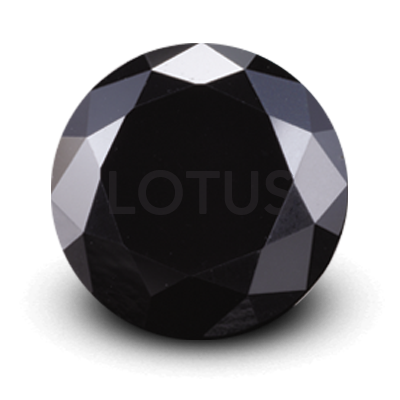Pricing Color Enhanced Diamonds
If you are new to the world of color diamonds and color enhancement, it can be difficult to know how to price them. Here is a short guide that will allow you to price enhanced color diamonds accurately, and relatively, based on the four C’s: color, clarity, cut and carat.
Blue Diamonds
All of our blue diamonds are irradiated using the completely safe low-energy electron acceleration process. Blue tends to be the most popular color, however, which gives the shade an extra value. Different shades of diamonds create different shades of blue, which means that our four different shades of blue are priced quite differently.
A ‘pure’ blue containing almost no greenish undertones is more desirable than one with greenish undertones. Equally, clearer, lighter blue diamonds are more desirable than darker shades which can hide imperfections. The aqua blues are more expensive because they are made using whiter diamonds than the other shades of blue. The darker tone of the blue diamond is a result of the original raw material being browner, which means that the darker the blue diamond the cheaper it is. Black inclusions are better hidden in dark blue diamonds while white feathers become more visible against the darker background.
Again, they are priced according to the four C’s. The larger, the better quality the cut and the clearer the diamond, the more expensive it will be. When it comes to the color, the lighter shades of blue have a premium placed over the darker shades.




Green diamonds
Our green diamonds come in four shades; Forest Green, Emerald Green, Ice Green and Pine Green, which graduate from the intense Forest Green to the more yellowish, bright peridot looking Ice Green, to the lightest Pine Green. As is the case with most colored diamonds, the lighter shades are made using the whiter diamonds and are the most expensive. As with blue diamonds, green diamonds are created using the irradiation process only.
Green diamonds are usually found with undertones of yellow or blue and too much of these undertones are not desirable. Too much yellow undertones will create a yellow stone, but the perfect balance heightens the brightness of a green stone.
Again, they are priced according to the four C’s. The larger, the better quality the cut and the clearer the diamond, the more expensive it will be. When it comes to the color, the darker forest greens are less expensive than the brighter ice greens and light Pine Greens as the original raw material used to create darker greens is browner. Therefore we must take both the brightness and the relative ‘greenness’ of the shade into consideration when pricing a green diamond.

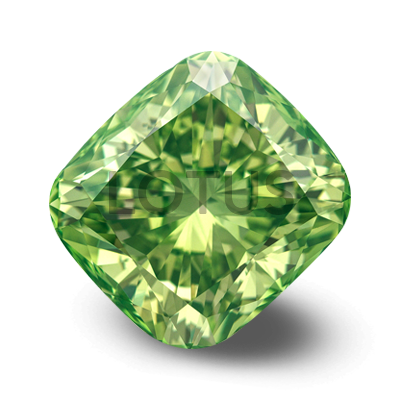

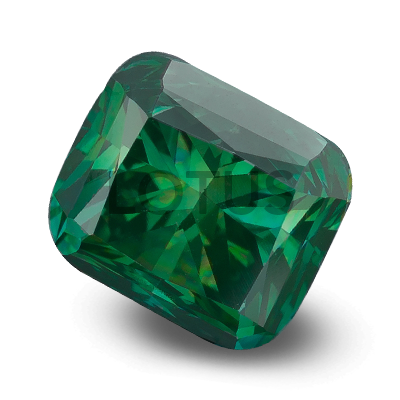
Yellow Diamonds
When assessing a yellow diamond, check the purity of its color. If it contains greenish or orangish shades, it is less desirable than a bright yellow diamond. As with the other color diamonds the brighter the color and the greater the clarity, the more expensive the diamond. The Canary color diamonds are more expensive as the raw material used to make them, top light capes, are more expensive than the top light browns that we use to create the Golden Yellows. The HPHT yellows are more expensive than the irradiated yellows not only because they look better but also because the treatment process is more expensive. There is the additional cost of recutting, which results in weight loss.
Again, they are priced according to the four C’s. The larger, the better quality the cut and the clearer the diamond, the more expensive it will be. When it comes to the color, bright canary diamonds have a premium placed over warm golden yellows. Also, the treatment process makes a difference in the price, HPHT yellows will command a premium over irradiated yellows due to the high cost of treatment.
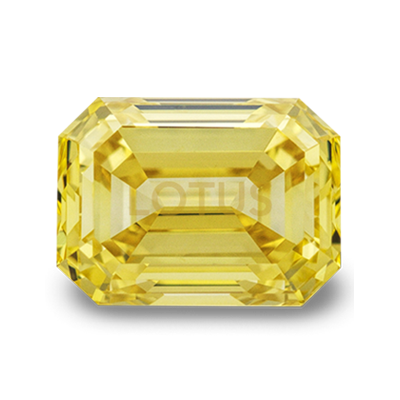
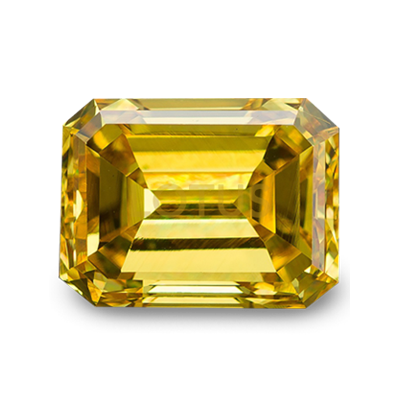
Orange and Red Diamonds
Our orange and red diamonds come in only one shade each; Orange Cognac and Red Cognac. Red Cognac is basically a more intense reddish shade of Orange Cognac.
Red & Orange diamonds can come with undertones of brown and black. None of these undertones are particularly desirable; our aim is to create a diamond of the purest color possible. The darker and less brighter the diamond, the less expensive it will be. Within the color range of red to orange, our red diamonds are the most expensive. This is because red is a little more difficult to achieve than orange. When trying to draw out red tones, some diamonds will simply become black. Because our yield of red diamonds is smaller, therefore, they are more highly priced.
Again like the other shades, orange and red diamonds are assessed according to their color, cut, carat, and clarity. The larger, the better quality the cut and the clearer the diamond, the more expensive it will be. In terms or color the reddish cognacs command a premium over the orangish cognacs due to their low yield.
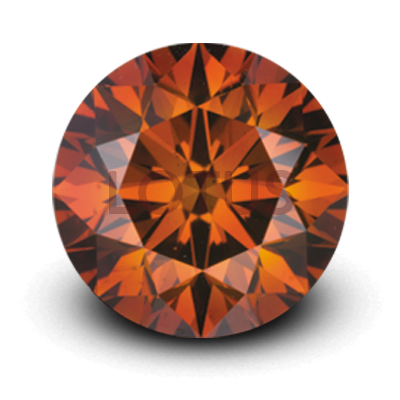
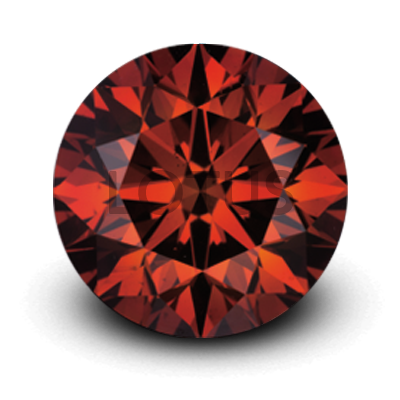
Pink & Purple Diamonds
Enhanced pink diamonds are the most expensive because they are the hardest to produce. True pink is not a color which emerges easily in diamonds during irradiation or HPHT. Scientists are currently unsure of which element creates pink diamonds. When we treat a thousand carats of the other colors only 2-3 carats emerge as purple or pink, and of that the large majority are on the purplish side. For this reason, the diamonds with the least amount of purplish undertones are more expensive.
Generally during the processes of irradiation and HPHT (high pressure high temperature) the diamonds which emerge will be on a scale from purple to pink, with the more pinkish colors being the most expensive.
Again, they are priced according to the four C’s. The larger, the better quality the cut and the clearer the diamond, the more expensive it will be. When it comes to the color, pink diamonds have a premium placed over purples because they are so difficult to create.
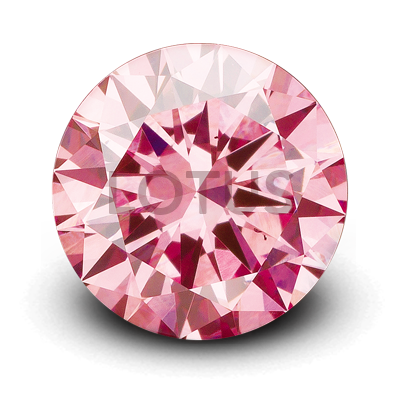
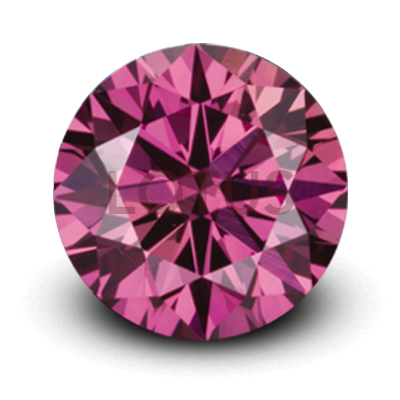
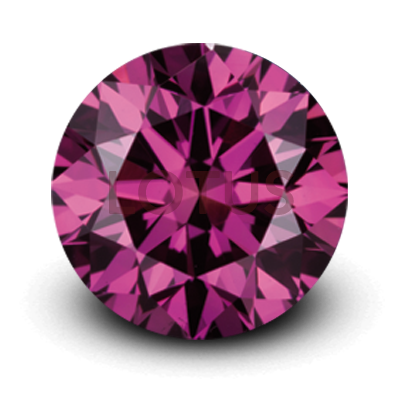
Black Diamonds
Black diamonds despite their popularity, tend to be the cheapest of all the colored diamonds on the market. This is because almost any diamond can be enhanced to become a black diamond. The darkness and opaqueness of the shade is perfect for diamonds which were originally dark brown, and imperfections can effectively be hidden. This means that the raw material we use to create black diamonds is relatively cheap, which in turn keeps the price of the finished product relatively low compared to some of the other color options. The price of each specific black diamond depends not on color because that is almost uniform, but only upon any open cavities or breakages in the stone. The more perfect the surface of the stone, the higher the price.
The result is a diamond which shines more than any other black gem and which makes a dramatic statement either on its own or in contrast to other white diamonds.
As with any other diamond, the price is based on the four C’s. The better quality of cut and the larger the diamond itself, the more expensive it will be. One difference in black diamonds is that the price does not increase by a lot as the size increases. Color is less of an issue with black diamonds, as they are all extremely similar in that capacity. When it comes to clarity, we consider the perfection of the surface of the stone alone rather than its opacity.
